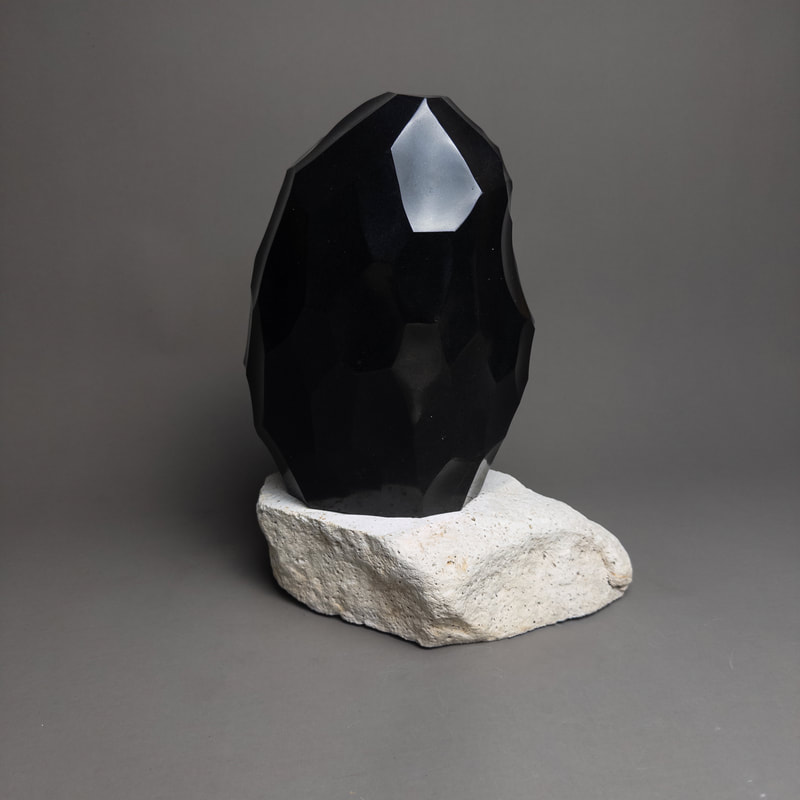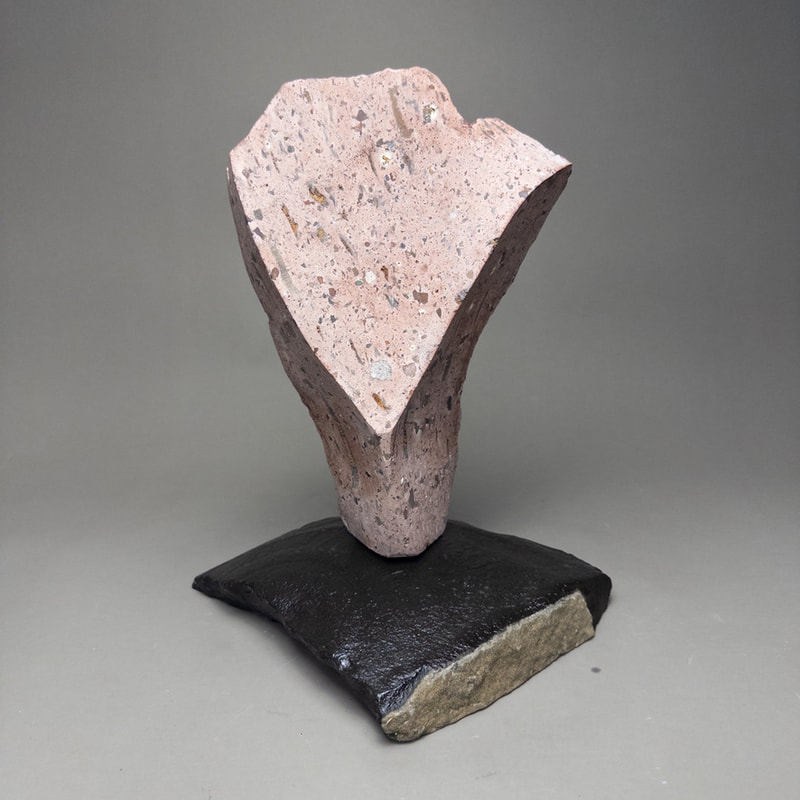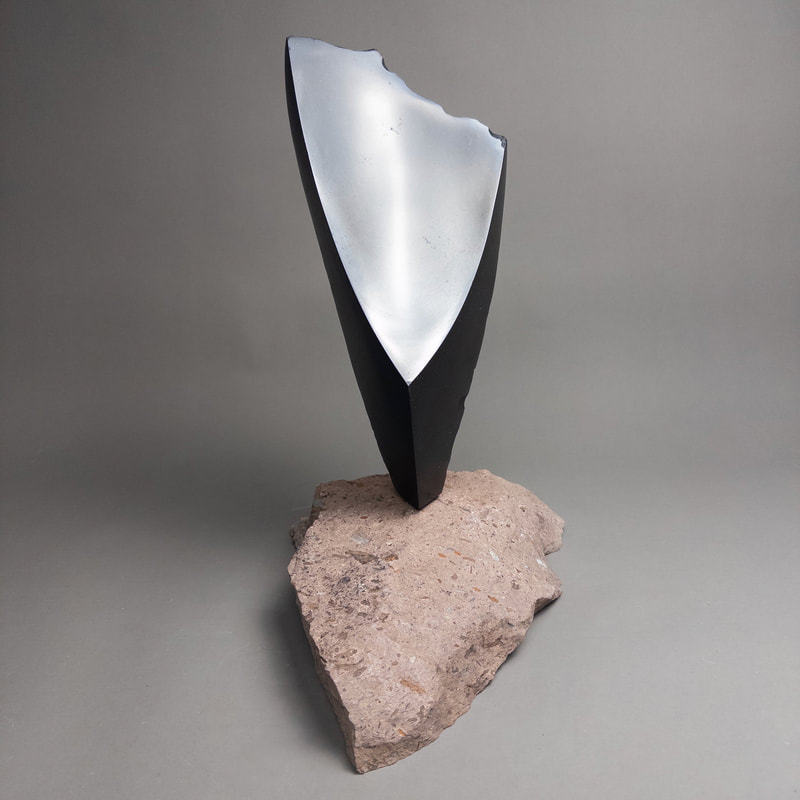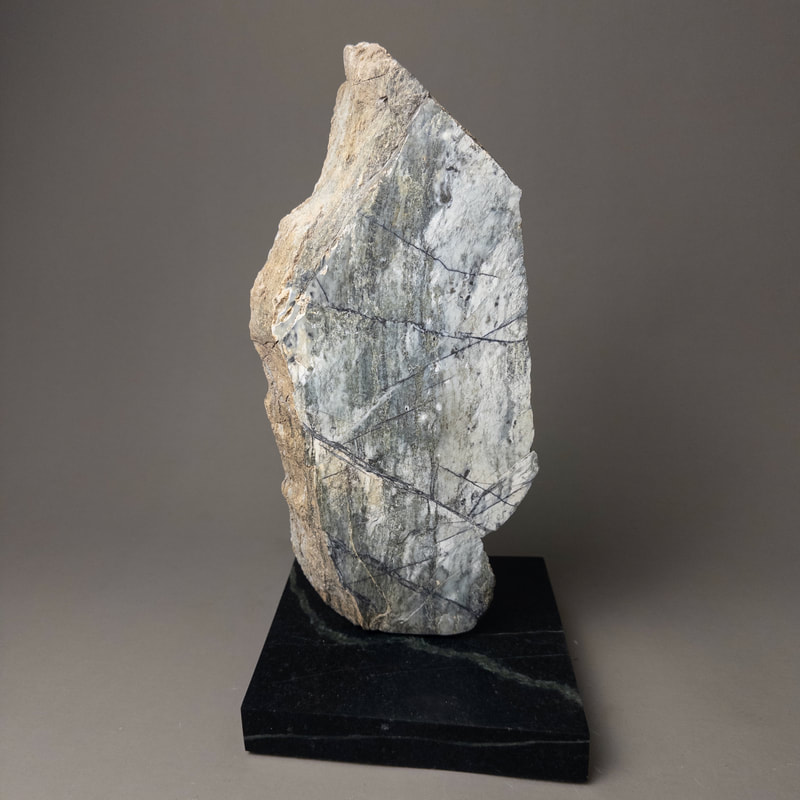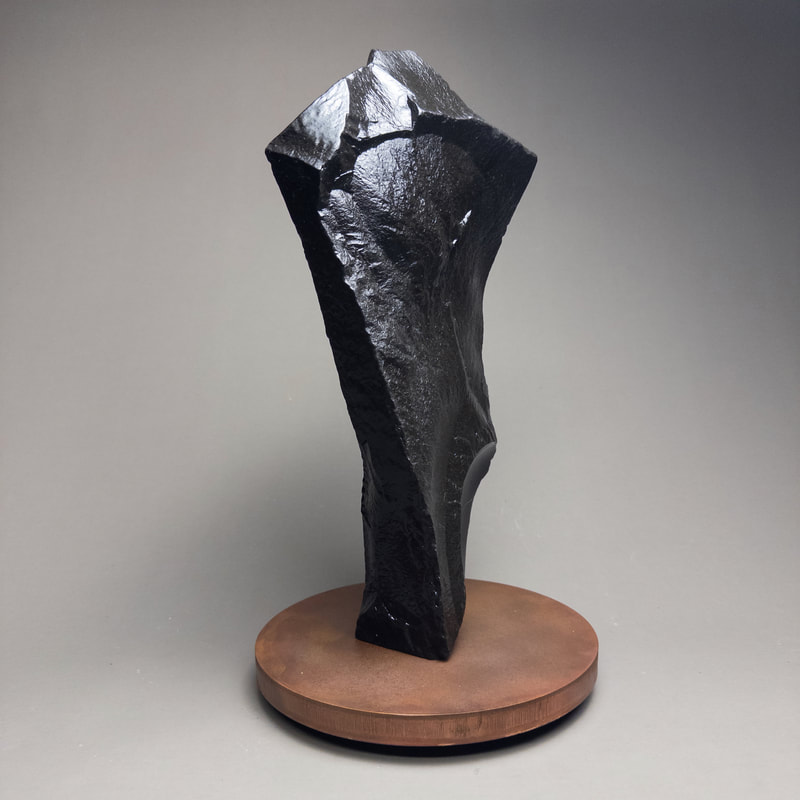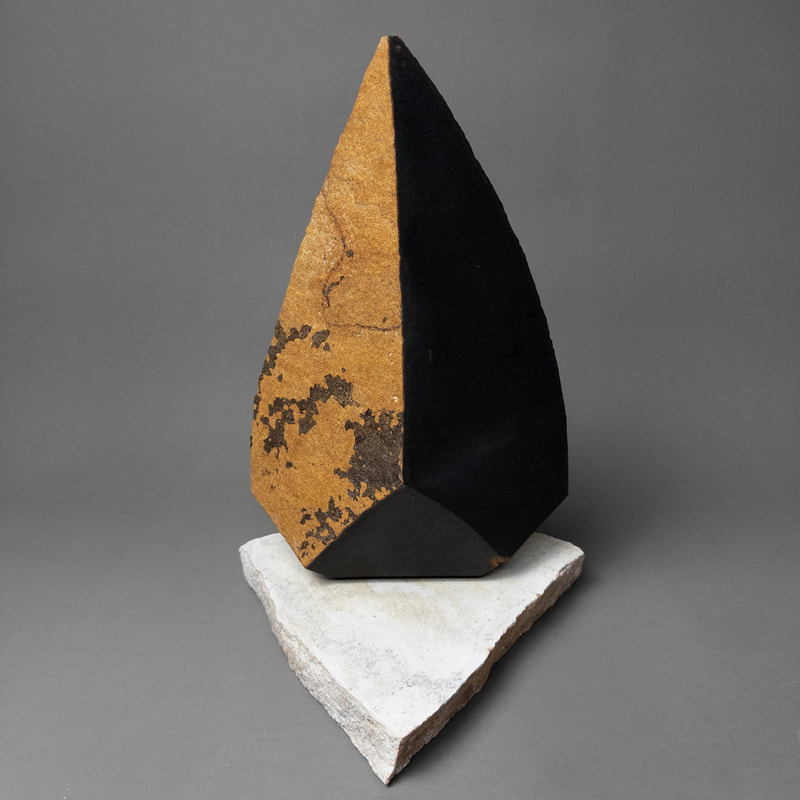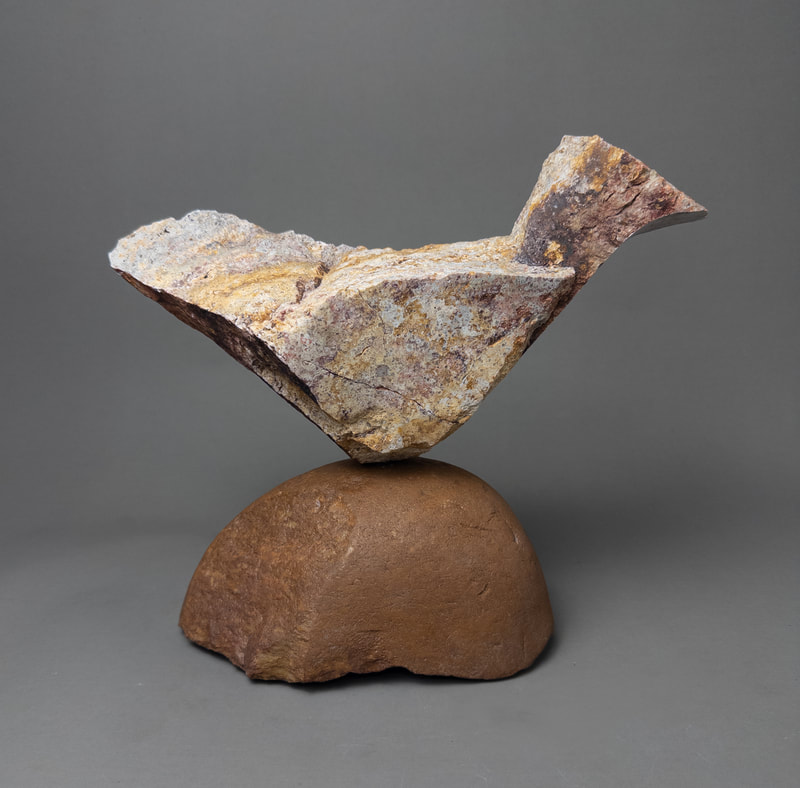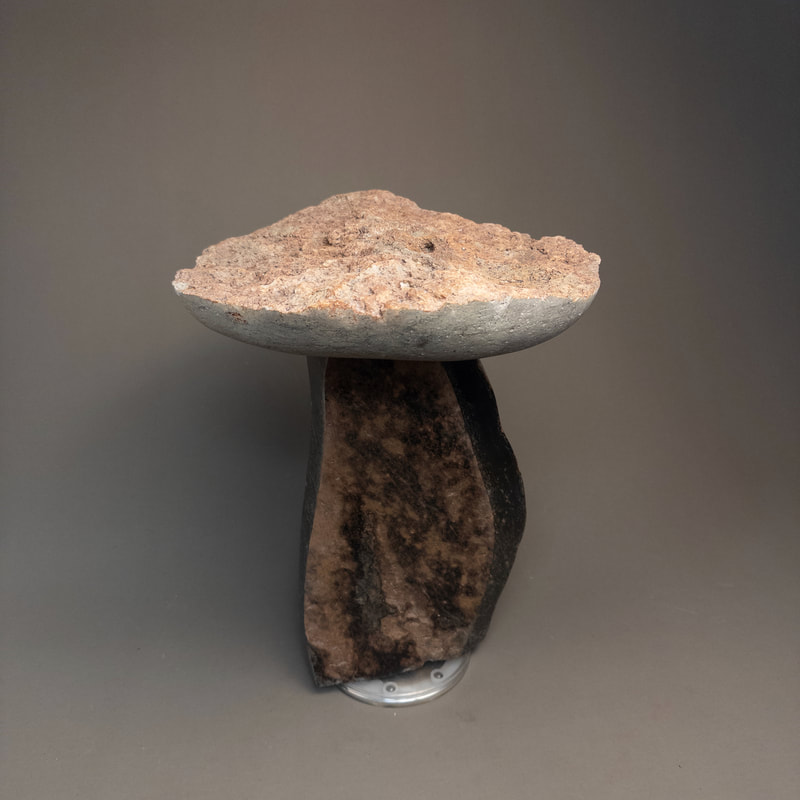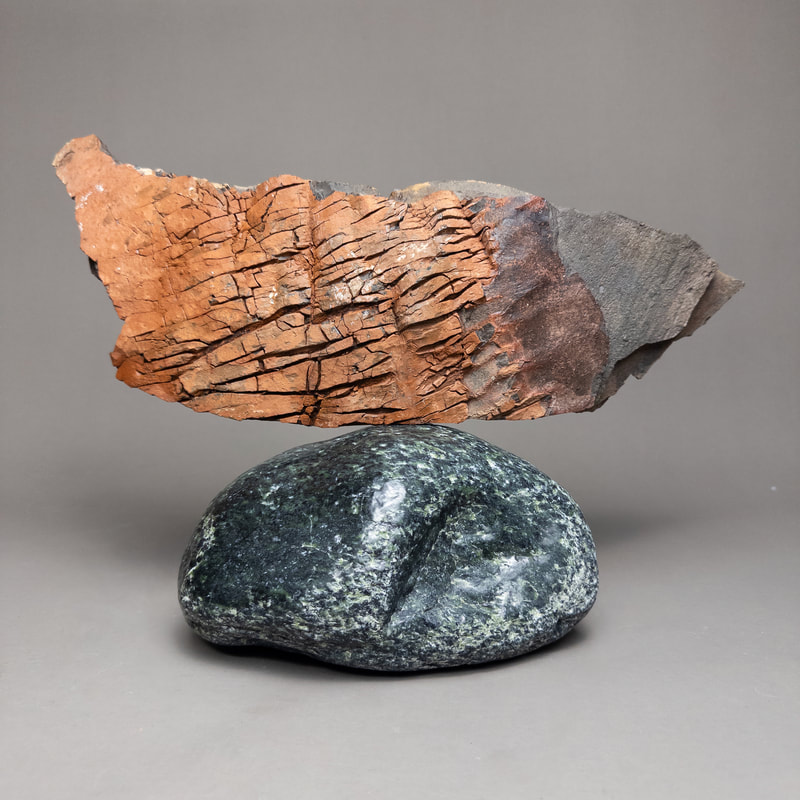Wildstones: Stone sculpture by Ian Madin
Oregon Native Stones
Over a long career as a field geologist, I have spent a lot of time looking at rocks. I have always been intrigued by the shapes, colors and textures that pieces of stone develop in the wild, and the contrast with the fresh rock within. The first thing a geologist does when encountering a new rock is to break it with a hammer to see what the inside looks like, and I love the moment of discovery that it brings.
For my stone sculpture, I look for pieces that have been naturally quarried by water, gravity and time, and that have unique shapes and beautiful patinas. I lightly shape and polish select surfaces, to open a window into the fresh interior, and to develop tension with the ancient natural surfaces. Much of my current work uses prismatically jointed basalt from the Columbia River Gorge, which combines elegant curves with smooth planes and crisp edges. The natural surfaces are painted with earth tones and patterns in iron oxide, which contrast with the dark polished surfaces. I also work with rhyolite and welded tuff that is common in Eastern Oregon and have a wide range of colors and textures.
When I find a piece, much of the work has already been done by thousands of years of slow weathering and erosion, which has freed the particular stone from its parent rock mass and given it a unique character. Each piece I work with has its own story, immeasurably deep in time, rooted in location, and largely beyond human experience. I try to make some part of that story accessible, while honoring its journey through worlds I cannot imagine.
For my stone sculpture, I look for pieces that have been naturally quarried by water, gravity and time, and that have unique shapes and beautiful patinas. I lightly shape and polish select surfaces, to open a window into the fresh interior, and to develop tension with the ancient natural surfaces. Much of my current work uses prismatically jointed basalt from the Columbia River Gorge, which combines elegant curves with smooth planes and crisp edges. The natural surfaces are painted with earth tones and patterns in iron oxide, which contrast with the dark polished surfaces. I also work with rhyolite and welded tuff that is common in Eastern Oregon and have a wide range of colors and textures.
When I find a piece, much of the work has already been done by thousands of years of slow weathering and erosion, which has freed the particular stone from its parent rock mass and given it a unique character. Each piece I work with has its own story, immeasurably deep in time, rooted in location, and largely beyond human experience. I try to make some part of that story accessible, while honoring its journey through worlds I cannot imagine.

